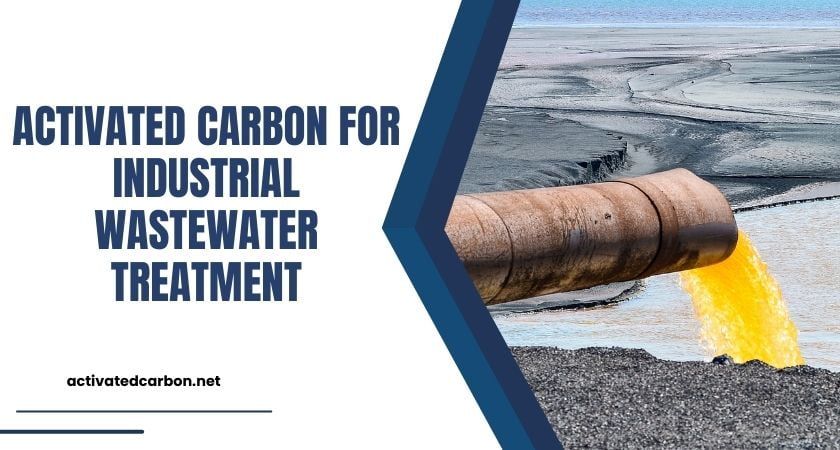
Industries are rapidly growing, leading to a substantial generation of wastewater. The efficient treatment and recycling of this wastewater are gaining increasing attention. Improper treatment can ultimately contaminate groundwater and other major water bodies, posing adverse effects on ecosystems, the environment, and even human health.
In this article, we will delve into the hazards of industrial wastewater and explore the application of activated carbon, revealing its advantages in wastewater treatment.
Hazards of Industrial Wastewater
Water discharged during various industrial processes, containing dissolved and suspended substances, is termed as industrial wastewater. This water, released from manufacturing, cleaning, and other commercial activities, harbors various microorganisms such as viruses, bacteria, protozoa, and algae. These microorganisms play a crucial role in spreading waterborne diseases, posing significant health concerns.
Common pollutants in industrial effluents include chemicals, heavy metals, petroleum, pesticides, sludge, pharmaceuticals, and other industrial by-products.
Generally, treating industrial wastewater is challenging and requires a powerful adsorbent to capture these pollutants.
Treatment of Industrial Wastewater

The environmental impact of industrial wastewater is substantial. To safely discharge these liquids, industrial facilities must undergo wastewater treatment, purifying them for reuse or safe disposal.
Traditional methods for wastewater treatment include chemical precipitation, ion exchange, adsorption, membrane processes, and evaporation. Among these methods, utilizing activated carbon for wastewater treatment is particularly effective.
Activated carbon, as a porous adsorbent, stands out as one of the best alternatives in wastewater treatment. The following will highlight the advantages of activated carbon in wastewater treatment.
Benefits of Activated Carbon
Activated carbon possesses significant advantages, including a large surface area, well-developed micropores, high mechanical strength, strong adsorption performance, rapid adsorption rate, robust purification capabilities, minimal dusting, stable chemical properties, ease of regeneration, and long service life.
It demonstrates a high adsorption capacity for organic compounds, effectively removing color, odor, and taste from wastewater. When industrial wastewater is treated with activated carbon, the biochemical oxygen demand (BOD) can be reduced by up to 99%.
Its application is extensive, proving effective against the majority of organic compounds in wastewater, including those that are difficult for microorganisms to degrade.
It exhibits strong adaptability, providing stable treatment results against variations in water quantity and organic load.
Useful substances can be recovered by regenerating saturated activated carbon, for example, treating phenol-containing wastewater and recovering sodium phenolate using alkali.
Compared to traditional wastewater treatment methods, activated carbon’s raw materials are renewable, resulting in lower operational costs.
Do you plan to purchase activated carbon?
Applications

It is well known that activated carbon has proven effective in removing various pollutants from industrial wastewater, including heavy metals, organic pollutants, and microorganisms.
Dissolved Organic Substances and Trace Pollutants
For dissolved organic substances and trace pollutants in water, such as benzene compounds, phenolic compounds, amine compounds, and synthetic dyes, activated carbon exhibits strong removal capabilities.
Removal of Heavy Metals in Water
Activated carbon demonstrates robust adsorption effects on heavy metals in wastewater, including mercury, lead, iron, nickel, chromium, zinc, and cobalt, widely applied in the paint industry, chemical plants, textile dyeing, and disposal of waste in landfills.
Removal of Organic Pollutants in Water Bodies
Common organic pollutants in water bodies include nitrobenzene compounds, petroleum, formaldehyde, and organic phosphorus pesticides. Palm oil factory wastewater, with high chemical oxygen demand (COD) and biochemical oxygen demand (BOD), has a significant impact on aquatic organisms.
Removal of Pigments in Water Bodies
Activated carbon has a strong adsorption capacity for pigments in industrial wastewater, effectively removing pigment pollutants, enhancing wastewater transparency, and making it easier to treat.
Removal of Low-Concentration Methanol
Methanol wastewater is widely present in artificial fiber, pharmaceuticals, petrochemicals, forestry chemicals, and sulfate pulp chemical wastewater. Using activated carbon can effectively adsorb methanol, enabling wastewater recovery and reuse.
Removal of Phenol
Phenol-containing wastewater is a widely polluted type of industrial wastewater, generated in gas plants, resin plants, insulating material plants, coking plants, petroleum cracking to ethylene, synthesis of phenol, nylon fiber, synthetic dyes, organic pesticides, and phenolic resin production processes. Activated carbon exhibits excellent adsorption performance for phenol, effectively reducing environmental harm.
Having gained insights into the application of activated carbon in wastewater, you might be wondering how to choose the right type of activated carbon. Continue reading, and you will discover the answers.
Types of Activated Carbon We Provide
Powdered and granular activated carbon can remove organic chemicals and reduce toxicity in wastewater for safe discharge into surface water. It is highly effective in removing odors and treating soluble organic chemicals, endocrine disruptors, and other emerging pollutants.
For wastewater treatment, we primarily offer the ZLGAC series and ZLPAC series of activated carbon products. Here are some specifications for these products:
| Specification | Granular Activated Carbon (ZLGAC Series) | Powdered Activated Carbon (ZLPAC Series) |
| Iodine Value | 800mg/g (minimum) | 800mg/g (minimum) |
| Moisture | 5% (maximum) | 10% (maximum) |
| Apparent Density | 350-500g/L | 350-500g/L |
Do you plan to purchase activated carbon?
Conclusion
After reading the above content, you now have a deeper understanding of the application of activated carbon in the field of industrial wastewater.
Utilizing activated carbon can remove organic chemicals from wastewater and reduce toxicity, allowing for safe discharge into surface water.
If you have specific requirements for industrial wastewater, feel free to contact us at any time for the most professional consultation. We will provide you with the most suitable products.